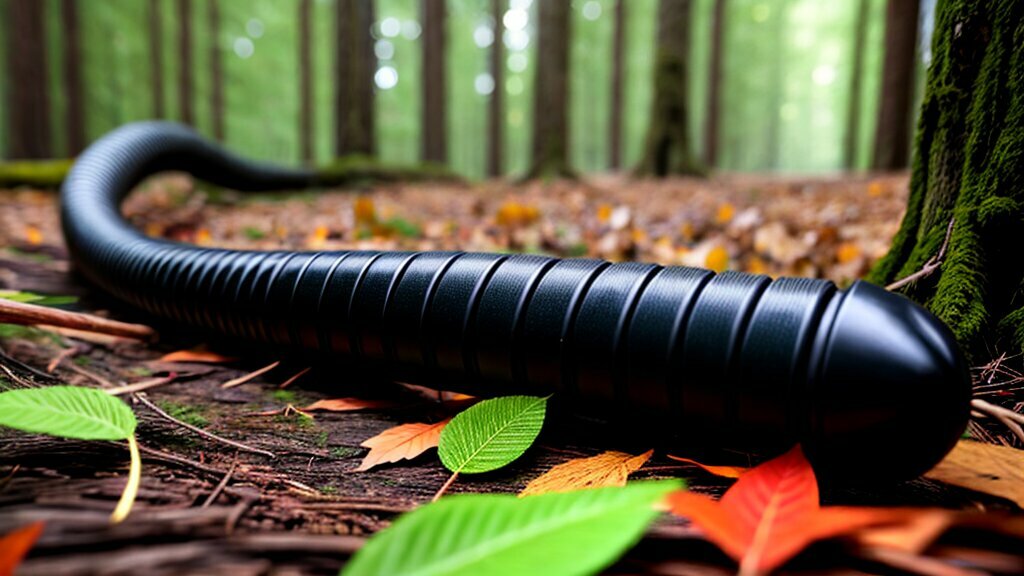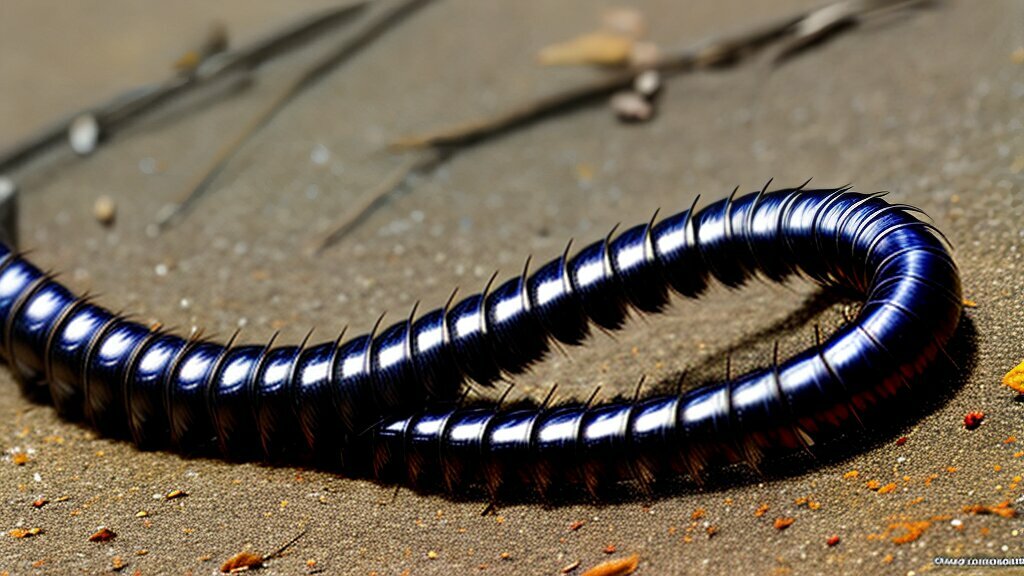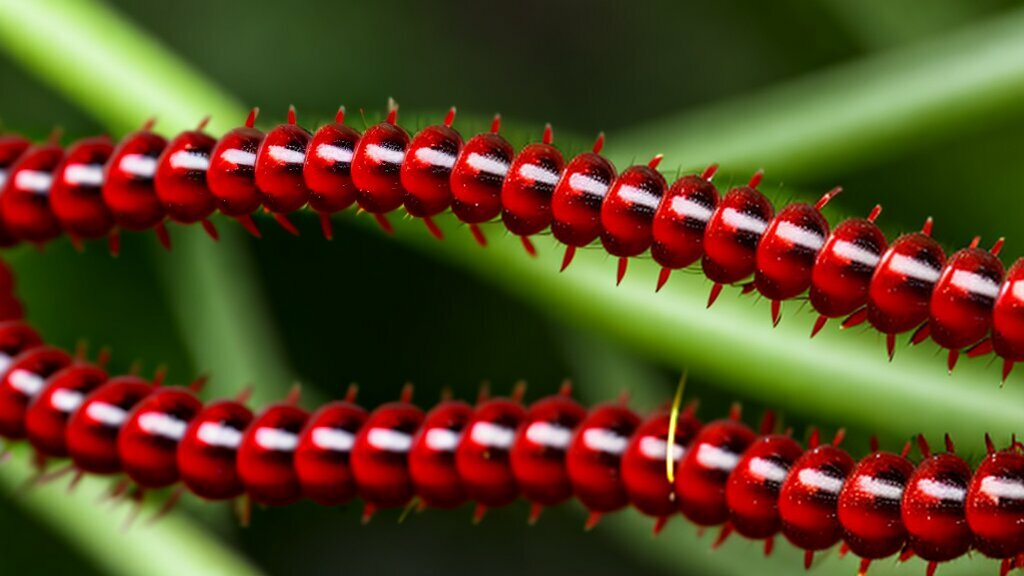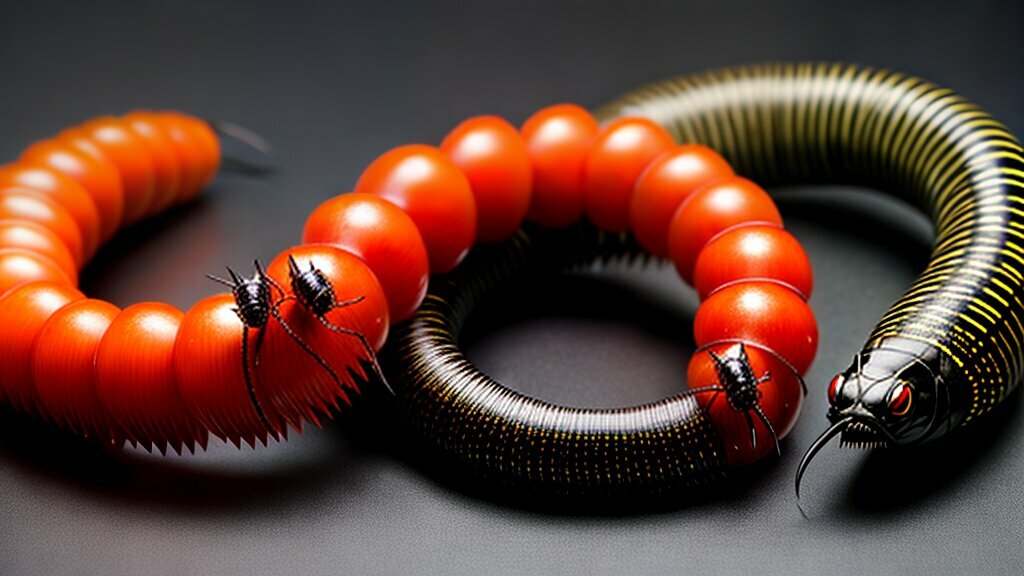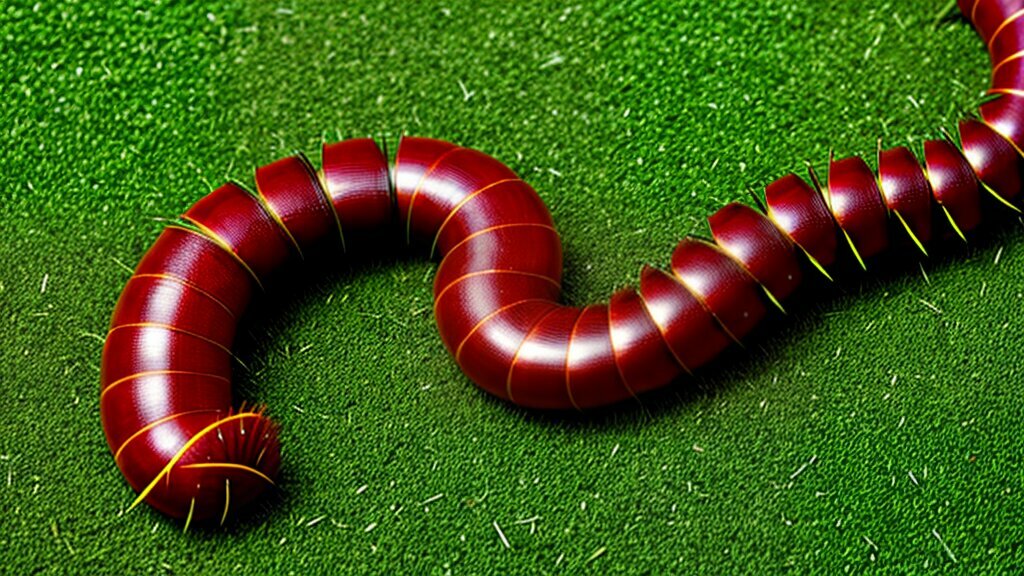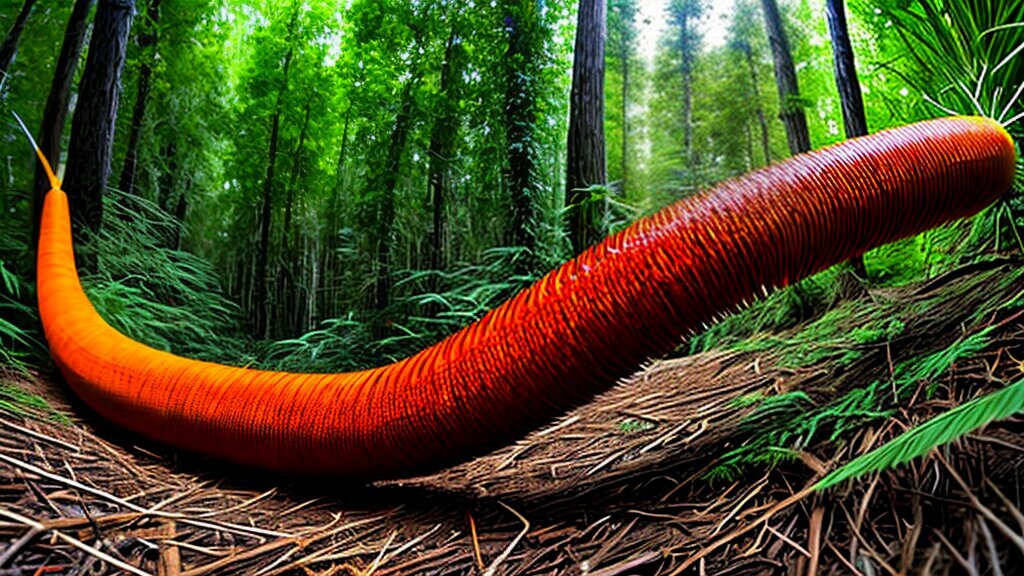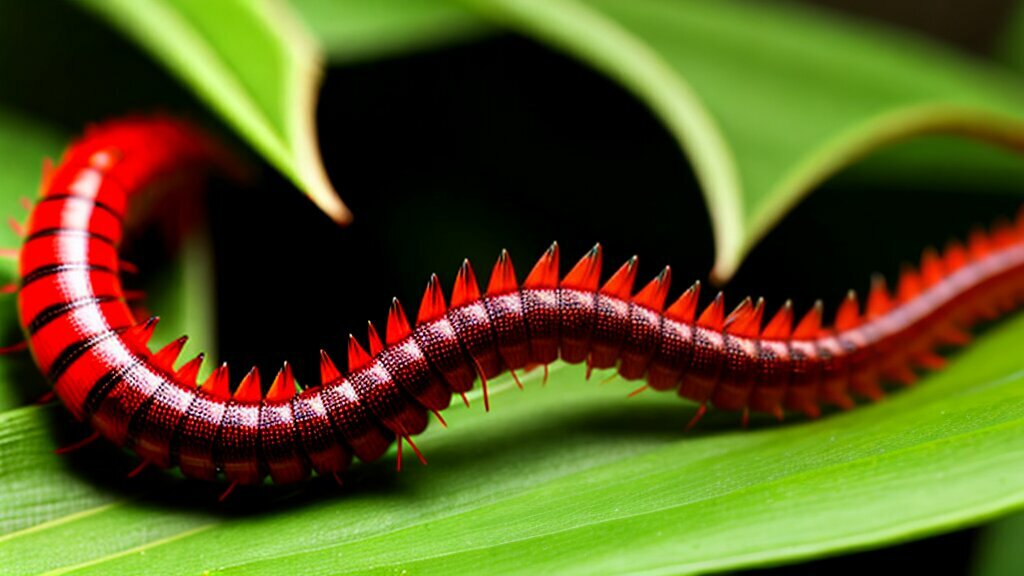Centipedes are fascinating creatures that come in different shapes and sizes. However, the 10 inch centipede stands out as a marvel of nature. This incredible species boasts an impressive size and unique characteristics that make it a captivating subject of study.
The existence of giant centipedes emphasizes the significance of this species. Their mere presence in nature reiterates the importance of biodiversity and the intricate balance of ecosystems that host these marvelous creatures.
Key Takeaways
- The 10 inch centipede is a remarkable creature with unique characteristics that make it a fascinating subject of study
- Giant centipedes serve as a reminder of the importance of biodiversity in ecosystems
Understanding Centipede Species
Centipedes belong to the class Chilopoda, with over 3,000 known species worldwide. They vary greatly in size, with some as small as a few millimeters and others reaching over a foot in length. Despite their name, centipedes do not have 100 legs: their leg count ranges from 15 to 177 pairs, depending on the species.
Centipedes have a long, flat body with numerous segments, each bearing a pair of legs. Their body is divided into two parts: the head and the trunk. The head has a pair of antennae and several pairs of modified legs that act as jaws, called forcipules. These jaws are used to inject venom into their prey or for self-defense.
The most common centipede species are found in temperate regions, but they can also be found in tropical and subtropical regions. Centipedes are typically found in moist environments, such as under rocks, logs, and leaves. Some species are adapted to living in arid conditions and can be found in deserts.
Centipedes play an important role in their ecosystem, serving as both predator and prey. They feed on insects, spiders, and other small arthropods, while also serving as a food source for larger predators such as birds and small mammals.
Interestingly, centipedes are one of the oldest known land creatures, with fossil records dating back more than 400 million years. They have adapted to various environments and evolved over time, making them a fascinating subject for study and research.
The Size of 10 Inch Centipedes
10 inch centipedes are considered large compared to other species in their family. The average centipede size ranges from 1cm to 30cm, with some species even capable of growing up to 35cm. This makes the 10 inch centipede a notable standout in size among the many centipede species.
The size of a centipede is determined by its genes, environment, and the available food source. Generally, centipedes living in nutrient-rich environments tend to grow larger than their counterparts living in less favorable conditions.
Despite their impressive size, 10 inch centipedes are dwarfed in comparison to some of nature’s giants. For instance, the Amazonian giant centipede, which is a predator to rodents and birds, can grow up to 35cm long and is considered one of the largest centipede species in the world.
Habitat of 10 Inch Centipedes
10 inch centipedes can be found in a variety of habitats, ranging from tropical rainforests to arid deserts. They are most commonly found in moist, humid environments, such as the forest floor, under rocks, and in leaf litter. These habitats provide an ideal environment for centipedes to hunt and reproduce.
One unique adaptation of 10 inch centipedes is their ability to live in harsh and extreme environments. Some species of giant centipedes can be found in caves, where they have adapted to total darkness and lack of food by slowing down their metabolism. This allows them to survive for long periods without sustenance.
Table 1: Examples of 10 Inch Centipede Habitats
| Habitat Type | Location |
|---|---|
| Tropical Rainforest | Amazon Basin, Brazil |
| Desert | Kalahari Desert, Botswana |
| Cave | Borneo Cave Systems, Malaysia |
Despite their ability to adapt to different environments, 10 inch centipedes are highly sensitive to changes in their habitat. Pollution, deforestation, and other human activities can have a significant impact on their survival. It is important to preserve their natural habitats and protect these unique and fascinating creatures.
Behavior of 10 Inch Centipedes
10 inch centipedes are fascinating creatures with unique behaviors and hunting methods that set them apart from other centipede species. These carnivores are known for their aggressive nature and speed, making them efficient hunters in their natural habitat.
When hunting, 10 inch centipedes use their sharp claws to grasp onto their prey, injecting them with venomous bites that immobilize and kill their victims. They are also capable of regenerating lost limbs, allowing them to continue hunting even after sustaining injuries.
During mating season, male centipedes perform a courtship dance to attract female partners. After mating, females lay about 60 eggs in burrows or crevices, with the young hatching in a matter of weeks.
Did you know? Some 10 inch centipedes have been observed engaging in cannibalistic behavior, where larger individuals may prey on smaller ones.
These behaviors and habits of 10 inch centipedes make them a unique and intriguing species to study in the natural world.
The Diet of 10 Inch Centipedes
10 inch centipedes are carnivorous predators, which means their diet consists solely of other animals. They are active hunters that use their powerful, venomous bite to subdue their prey. Their diet includes insects, spiders, and other invertebrates, as well as small vertebrates such as lizards and rodents.
One of the most interesting things about centipedes is their feeding habits. They have a unique way of eating that can be quite gruesome to witness. After capturing their prey with their venomous bite, they use their sharp front legs to hold the prey in place and use their mandibles to tear it apart. They can consume prey that is much larger than their own body, which is facilitated by their ability to stretch and expand their jaws to swallow larger pieces of prey.
Despite their frightening appearance and predatory behavior, centipedes play an important role in their ecosystem by controlling the populations of other invertebrates. They are also considered a delicacy in some cultures and are used in traditional medicines.
Adapting to a 10 Inch Centipede’s Lifestyle
10 inch centipedes have evolved numerous adaptations that allow them to survive and thrive in their unique habitats. One such adaptation is their impressive speed and agility, which enables them to quickly navigate through narrow crevices and hunt prey with precision.
Another adaptation of 10 inch centipedes is their ability to regrow lost legs, a feature known as autotomy. This ability allows them to escape predators and continue hunting with minimal disruption to their daily routines.
| Adaptations of 10 Inch Centipedes | Description |
|---|---|
| Speed and agility | 10 inch centipedes can move quickly through tight spaces and hunt prey with precision. |
| Autotomy | 10 inch centipedes can regrow lost legs, allowing them to escape predators and continue hunting. |
| Resistance to toxins | Many 10 inch centipedes are resistant to toxins found in the venom of their prey, allowing them to safely consume them. |
Furthermore, many 10 inch centipedes have developed resistance to toxins found in the venom of their prey, allowing them to safely consume potentially deadly creatures.
As research continues to uncover more about these fascinating creatures, it is likely that more adaptations will be discovered and studied.
Interaction with Humans
Encounters with 10 inch centipedes can be intimidating, given their size and carnivorous nature. However, these creatures are typically shy and elusive, and will only attack if provoked or threatened.
It is important to approach 10 inch centipedes with caution and respect, and avoid handling them if possible. In the event of a bite, immediate medical attention should be sought, as the venom of some centipede species can be harmful to humans.
Despite their potential danger, 10 inch centipedes play an important role in their ecosystem and should be regarded as a valuable part of nature. By understanding and appreciating their behavior and habitat, we can coexist with these fascinating creatures without posing a threat to one another.
Centipede Conservation and Protection
While the 10 inch centipede may seem like a fearsome creature to some, it plays an important role in the ecosystem. Like other centipede species, it helps control populations of insects and other small animals, keeping the balance of nature in check. Unfortunately, many centipede species are threatened by habitat loss, pollution, and other environmental factors.
Efforts are being made around the world to protect and conserve centipede species, including the 10 inch centipede. Conservation efforts often focus on preserving natural habitats, such as forests and wetlands, and promoting sustainable land use practices. In addition, researchers are working to better understand centipede behavior and ecology, which can help inform future conservation strategies.
One particularly important conservation initiative is the International Union for Conservation of Nature’s (IUCN) Red List, which assesses the status of endangered species around the world. While the 10 inch centipede is not specifically listed on the Red List, many other centipede species are, highlighting the need for continued conservation efforts in this area.
Overall, protecting centipede species is key to maintaining the biodiversity and health of our planet’s ecosystems. By supporting conservation efforts and promoting sustainable practices, we can help ensure that these fascinating creatures continue to thrive in the years to come.
Future Research and Discoveries
As with many natural wonders, there is still much to learn about centipedes, including the 10 inch centipede. Scientists are continually conducting research to uncover new information about these fascinating creatures and how they fit into their ecosystems.
Future studies may delve deeper into the behavior and habits of different centipede species, including the 10 inch centipede, in order to better understand their interactions with other organisms in their environments. New technologies may also allow for more detailed exploration of the internal anatomy and physiological processes of centipedes, shedding light on their complex biology.
Advances in genetic sequencing may also reveal more about the evolutionary history of centipedes, providing insight into their diversification and development over time. This information could aid in conservation efforts and help protect centipede species from threats such as habitat destruction and climate change.
With ongoing scientific exploration and discovery, there is no doubt that the world of centipedes, including the impressive 10 inch centipede, will continue to reveal new wonders and marvels for us to appreciate and admire.
Conclusion
In conclusion, 10 inch centipedes are truly nature’s marvel. Their impressive size, unique adaptations, and carnivorous behavior make them fascinating creatures to study and observe.
Understanding the various centipede species and their characteristics is crucial in appreciating the diversity and complexity of the natural world. However, it is also important to recognize the need for conservation and protection of these species, particularly as their habitats are threatened by human activities.
As research and exploration continue to expand our knowledge of centipedes, we can expect to uncover even more mysteries and wonders surrounding these enigmatic creatures.
FAQ
Q: What is the significance of 10 inch centipedes in nature?
A: 10 inch centipedes are a marvel of nature due to their large size. They are also known as giant centipedes.
Q: How many different centipede species are there?
A: There are numerous centipede species, each with unique characteristics and behaviors.
Q: How large are 10 inch centipedes compared to other species?
A: 10 inch centipedes are considered large compared to other centipede species.
Q: What is the natural habitat of 10 inch centipedes?
A: 10 inch centipedes thrive in various environments, preferring specific living conditions.
Q: What are the behavior and habits of 10 inch centipedes?
A: 10 inch centipedes exhibit interesting hunting methods, mating rituals, and interactions with other species.
Q: What do 10 inch centipedes eat?
A: 10 inch centipedes have a carnivorous diet and prey on various organisms.
Q: How have 10 inch centipedes evolved to adapt to their habitat?
A: 10 inch centipedes have evolved unique features and adaptations to survive and thrive in their specific habitat.
Q: What are the potential encounters between 10 inch centipedes and humans?
A: This section addresses concerns and misconceptions about 10 inch centipedes’ behavior and danger to humans.
Q: Why is it important to conserve centipede species?
A: The conservation of centipede species is crucial for preserving biodiversity and protecting their habitats.
Q: What can we expect from future research on centipedes?
A: Ongoing scientific exploration is expected to uncover more about centipedes’ behavior, evolution, and ecological roles.

